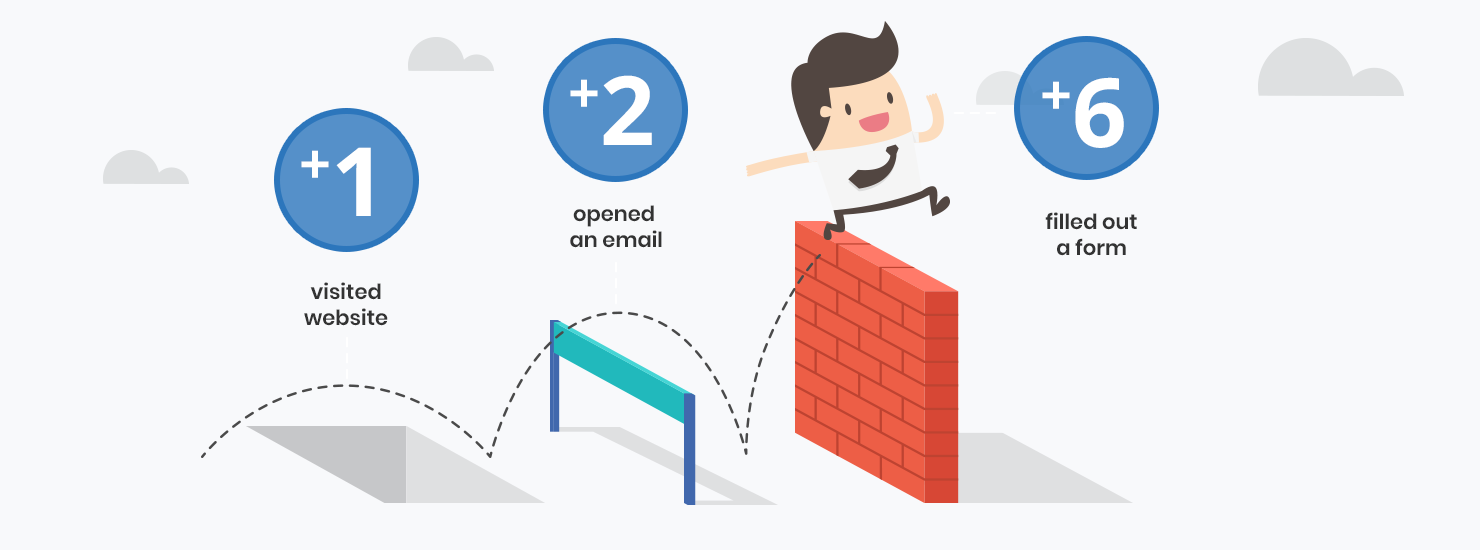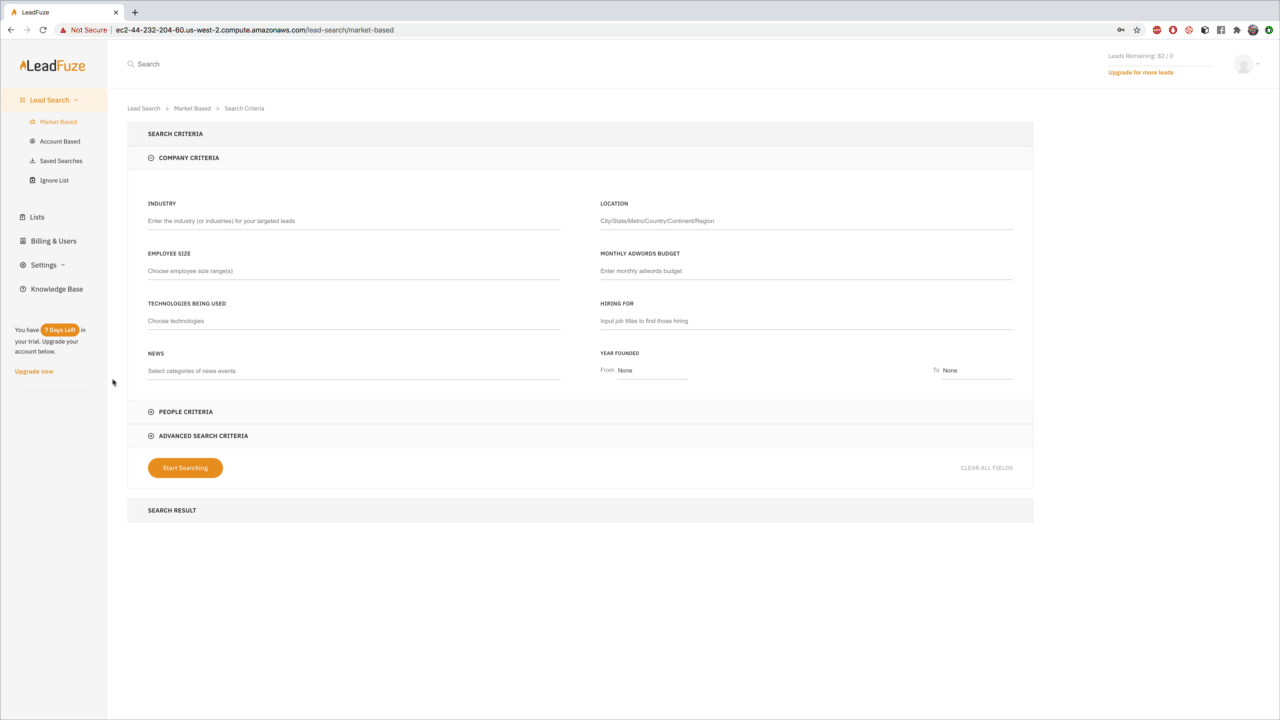What is Lead Qualification
Lead qualification is a process of identifying lead sources (both inside and outside) who have a higher potential for generating high-quality leads.
Lead qualification is important because it helps generate quality leads from sources that have a higher probability of interest, rather than wasting time with sources who are not likely to be interested.
You’ll get more leads and fewer tire-kickers if you know how to qualify sales leads properly.
Lead qualification is also important because it allows sales reps to focus on a qualified sale lead, so they can spend more time with them.
The desired result of lead qualification is a qualified prospect – someone who has the potential to become one of your best customers and provide an excellent return on investment for your marketing efforts.

(Image Source: ZoomInfo Blog)
What is a Sales Qualified Lead
A sales-qualified lead is a lead that has been qualified by a salesperson, which means there is some sort of potential for the lead to become one of your best customers.
If a lead is sales qualified, it means that the salesperson can invest more time in following up with them, and they are less likely to be inactive leads.
10 Lead Qualifications Red Flags
Here are some red flags of poor lead quality and qualifications:
1. They have no budget
So your potential client seems heads over heels for your brand – you couldn’t be happier! Then, the other shoe drops.
They simply “have no budget for this.” This terrible phrase may also be uttered in a variety of ways including (but not limited to) “we recently had our budget cut,” or “we would love to work with you, but we can’t justify spending this money now.”
No matter the form in which it is said, it all translates to the same thing — unqualified lead.
Wasting your time trying to come up with some scenario in which they can afford it will ultimately backfire 9 times out of 10.

(Image Source: Andrew Sobel)
2. They aren’t the decision-maker in their company
This one is a real heart-breaker!
The client loves your company and understands the value of your pricing. All lights are green and signs point to instant conversion. But who is this person exactly? What is their title and rank within their company?
If you are speaking with anyone other than the person with the authority to make the purchase, your time is being wasted. That’s not to say that you can’t try to connect with the appropriate contact within the company, but there is no guarantee you will garner the same level of interest. Time to say goodbye and move on!
3. They have no engagement with your content
Creating content in sales is all about lead nurturing and getting people excited about our value. For some, it may be their first time learning about your company. If you are dealing with a lead that isn’t engaging with your content, they are likely a fair-weather friend.
Maybe they like the idea of what you offer but have no real motivation/budget/intention of becoming a viable lead.
Those who are truly excited about your company will be like your overzealous relative who just joined social media. They will be interacting with your content, sharing your posts, and retweeting.
This also applies to your email campaigns. If your lead isn’t clicking your content in emails, they probably just don’t care enough to take the 10 seconds to see what they sent you. Would you stay friends with someone like that? MOVING ON!
4. They filled out your contact form with fake information
This is one we see ALL the time. We know your real number isn’t 555-5555. It’s like giving someone a fake name at a bar. You may be bored and want to chat a little, but you don’t want to be contacted again.
If a lead isn’t giving you all their information, they are lukewarm about you, or they are perhaps window shopping. Only 25% of leads are legitimate. Wasting time tracking down these false leads is pointless.
The good news is that you may still hear from them down the road when they are ready for a serious purchase and are further down the sales funnel.
You know what they say, “…if they come back it’s meant to be.”
5. They have a problem you can’t solve
You may be your company’s sales superman but if you can’t solve a client’s issues with your product and services, there is no point wasting time.
While sometimes this is obvious, other times it’s a bit harder to see.
Do you notice during your pitch that they are giving you clues like “we don’t have that issue,” or “I’m not sure how that would apply to us.”
These are your red flags. Like it or not, it’s not a good fit.
6. The timing is wrong
This one happens a lot.
They tick off most boxes for a qualified lead, but the timing isn’t right for them to move forward. This is most commonly noted by statements like “we like what you have to offer, it’s just not the right time for us to buy.”
At this point, you are really at a standstill. There are many things you can do to overcome objections, however, time isn’t going to be one of them.
7. Your sales call is short
Consider this akin to the horrible first date where no one has much to say and one of you keeps checking your watch.
The short sales call is a surefire sign that interest isn’t there.
Whether it’s a cold call or a call with a lead who has expressed interest, if you feel like you are being rushed off the phone, there is no use wasting your time.
8. Multiple ignored offers
Let’s face it; we put a lot of time, money, and effort into carefully crafting our content and automation software to reach our leads wherever they are in the sales funnel.
We are doing our part to communicate but if you aren’t getting any kind of response it’s time to spend time on those who are ready to buy.
Who likes sitting at home waiting for the phone to ring?
9. Uneducated about the company
Leads who are really interested in fixing their issue will eat up all the information they can about you. They are truly excited about all that you have to offer. If they don’t seem to know much about your company, they haven’t been actively researching you.
The fine print?
They aren’t that interested.
Now, this is an indicator of poor lead quality only IF your content is great, and you aren’t leaving any gaps. Considering that yours is likely stellar, they just aren’t serious about you. Next!
10. They don’t have a solution in mind
Ask anyone their problems, and you’ll probably wish that you didn’t as you stand there 10 minutes later looking for a way to get the heck out of there.
Problems will stay just that until a solution comes to mind.
Your job as a salesperson is of course to help them see that YOU offer them a solution but if you are getting feedback like “yeah, not really sure that I can picture that helping,” they probably have no clue what would make their situation better and if they can’t see that, you can’t help them.
4 Reasons Behind Generating Low-Quality Leads
So what if you feel that the majority of your leads are of poor quality? This can be rather disheartening, but it happens if you don’t have a great lead generation program in place.
Here are some of the most common reasons you might be drawing the attention of low-quality leads.
1. Your content is not attracting the right people
The way you craft your content says a lot about the people you will attract. Take a look at your recent content and ask yourself “who am I writing this for?”
Is your content aimed at the person making buying decisions?
Is it crafted toward those who can afford your products/services?
Content is not about just writing about things YOU find interesting. It’s all about crafting it for the RIGHT kind of audience. Put yourself in the shoes of your ideal lead. What are they hoping to learn? What do they need to know? Create killer content that appeals to all these inquiries and make sure you are placing it where your desired audience will see it.

(Image Source: Talkroute)
2. You don’t have a lead qualification process off the bat
To save time, you need a great lead qualification process early on. What safeguards do you have in place to weed out low-quality leads from quality ones in the beginning?
Chances are, if you are getting hit with tons of poor leads, you don’t have one.
Not to worry! At least now you know what you need to do.
As far as choosing the sales qualification process that works for you, look at the qualities that are making your leads poor ones.
Is price a concern among them? Then you may want to produce sample pricing early on to be sure that you are discouraging those who cannot purchase at the time.
3. You’re not asking the right lead qualifying questions
Keep this in mind – all sales calls are not the same.
This may sound simple, but if you are interacting with all your leads in the same way, you might just be wasting your time.
You need to make sure you are asking the right questions to determine if this sale is likely to convert. Once you have done this, set up a ranking system and sort out the leads you think have the most potential and those who seem unlikely to make it through the sales funnel.
This will save you and your team from wasting valuable time on the wrong people.
4. Delayed follow-up
Imagine that you are the lead, and you are really excited to find a company that can solve your own business’s problem. You read all the content you can about them, you enter your information in right away, and you hear nothing…. This may continue for a few days or a week but when you finally hear from them, the thrill has sort of worn off. Right?
6 Ways to Identify Qualified Leads
There are different ways to identify prospect or qualified leads and here are some of them:
Lead scoring
When leads meet the requirements, you can assign them a lead score to see how interested they are in your company.

(Image Source: Raka Creative)
Buyer profile
If the prospect falls into your target territory or industry segment, that is a good start. This means they match your buyer profile and can help solve some of the challenges you’ve been looking for as well.
Online behavior
If the lead is engaging with your content, then they are eager to learn more about you and what you do. This also means that they have an interest in what’s going on at your company so making a move will be easier for them as well.
Social media management
If you are active on social media, then make sure that your posts land in the potential customer’s feed. Keep an eye out for any comments or likes and also reply to them if necessary.
Company information
If you know that the potential customer is a current or past client, then they are more likely to want to work with your company.
Email engagement
If the lead is engaging with your emails, then you can tell them about new products or services that are coming out. Click-through rates and open rates can help you determine if the lead is interested in what your company has to offer.
How to Qualify Leads: 8 Actionable Strategies
Now that you know how important prospect qualification is, it’s time to learn about different strategies to make the process easier.
Come and let’s take a closer look!
1. Ask qualifying questions
The first way to qualify a lead is by asking qualifying questions. You can use these types of questions before the sales call, or at some other point in time.
It’s alright for questions to be lengthy, as long as they’re the right ones.
The more effort the prospect puts into the inquiry, the more likely they are to be qualified.
Some qualifying questions you can ask:
- What is your company size?
- How many employees does your company have?
- Do you work on a team or individually?
- What’s your typical customer pipeline look like and what percentage of them convert to customers?
- What are your long-term goals for this project or company growth over the next year?
Try not to ask leading questions, as they can skew answers.
It’s okay if you don’t have all the qualifying information at first — just keep in mind that it may be necessary later on when the conversation gets more in-depth.

(Image: JustSell)
2. Build a FAQs section on your sales page
You should be answering all their questions, from “How much does it cost?” to “Why should I choose you over other providers?”
This is a great way for them to get a sense of your company’s culture and see if they want to work with you.
If they reached out to you and asked questions that are not on the FAQs page, make sure you answer those as well.
This will make your prospect feel valued, and like you want to work with them.
The more information upfront, then the less back-and-forth there is when it’s time for a follow-up call or email.
3. Set a clear price point
This is a crucial step in any lead qualification.
If you’re not sure what your product or service costs, make it clear to the person contacting you that they should email somebody else at the company for pricing information.
Doing so will help them get an answer more quickly and save both of your time during this initial phase of communication
Let’s say you are a consultant, and they ask for your rates.
An easy answer could be, “I’m happy to provide more information about my prices when I know more about what you’re looking for.”
This way the person contacting you can either send over a request or wait until another time.
4. Call out industries that are a good fit and the ones that are not
You should be very specific with your niche.
For example, if you are in the legal industry, mention that it is not a good fit for people looking to start their own business.
If your niche has specific needs and requirements make sure you list those out as well, so there’s no confusion on what they should be considering before reaching out.
5. Be straightforward about the basics
If you are not the right fit for a person, let them know that they should contact someone else.
This can save time and frustration as well as make both parties more appreciative of what is available in their industry
Ask if there’s anything specific they’re looking for because this might be a sign that they’re not a right fit
If you have any other resources to offer, mention them now.
For example, if the person is looking for something specific like how to find office space in your city or what kind of equipment their industry uses then mention it at this time, so you don’t forget and lead them on when there’s nothing to offer.
6. Survey the leads that got away
When leads fall out of your sales funnel, it’s important to know why they decided not to opt-in.
You might be missing out on a huge opportunity by overlooking the fact that your lead qualification process is flawed or even incomplete
Ask yourself questions like:
- What was their income level?
- Did you ask them about how many employees they had at their company? How old are they?
- What their industry is, and what product or service they offer?
If you don’t know the answers to these questions for each lead that falls out of your sales funnel then it’s time to do a little homework.
The best way to start understanding why someone didn’t opt-in is by surveying them after they leave.
One way to do this is by sending an email survey that asks the following:
“What are you looking for in a solution?”
This can help you understand what kind of service or product they might be interested in, and also how your lead qualification process could have been improved from their perspective.
You may find out leads are not interested in your service or product, then it would be wise to re-evaluate the wording of your lead qualification questions.
This will help you develop a process for qualifying a lead and disqualifying prospects better than ever before!
7. Create an engaging demo video
A great demo video can increase your sales by 30%.
That means for every 100 leads, you could have an increase of 30 sales.
This is because prospects feel more confident in your product or service after watching the video and are eager to purchase it.
A well-designed demo can also answer questions such as: “How does this work?” and “What do I need to get started?”
8. Align sales and marketing teams
One of the keys to success in lead qualification is having a team that works together.
Salespeople can use marketing campaigns as an opportunity for qualifying sales leads, while marketers can do the same with social media posts and website content.
This allows you to have more effective sales conversations because both teams are on board with what qualifies or disqualifies a lead.
How to Set Up a Lead Qualification Process
The lead qualification process can be complicated. We know you’re busy, so you can just let LeadFuze do the work for you.
It’s a lead qualification service that helps businesses collect intel and information about their prospects to qualify a customer. Its team of qualified researchers will help you find out who your qualified prospect is, what they want, and how they can be reached.
If you don’t have time to spend hours researching every single lead, LeadFuze will do it for you! With its research-driven approach, it’ll provide detailed reports on each prospect with all the information needed to make a decision.
And if there’s anything else it missed or needs clarification on – just let them know! It’s as easy as sending an email or making a phone call. No more wasting time trying to figure things out yourself when LeadFuze has everything ready in one place for you!

Sign up for a free trial of LeadFuze!
Not sure how you can start with sales qualification? The following guide can help you.
BANT
The BANT process is one that many sales teams use as a way to qualify lead.
It stands for Budget, Authority, Need, and Timeframe, which can help you determine if the lead has an interest in your product or service:
- Do they have a budget? Do they have the authority to make purchasing decisions on behalf of their business?
- Do they have a need for your product or service and are you able to fulfill that need?
- When is the lead looking to purchase if at all possible?
The goal of this process, as it relates to BANT questions, is not just about gathering data but also determining whether there’s any type of mutual interest in a potential business relationship.
If they don’t have any of the things you’re looking for, then this really isn’t a prospecting lead that’s worth your time and energy.
This process is not only helpful in determining if someone should be a good customer but also as an indicator to determine where you might want to focus more marketing dollars.
CHAMP
CHAMP stands for Challenges, Authority, Money, and Prioritization.
This is a more detailed process of asking questions that can be used to determine if someone should become a customer.
It’s important to note, this isn’t the only sales lead qualification process out there, but it works really well for some sales organizations.
- What challenges are they facing?
- Where do you have authority or influence?
- How much money are they willing to spend?
- What is their relative priority for this issue or problem?
This process is not only helpful in determining if someone should be a customer, but also in determining if someone is worth your time to even engage with.
MEDDIC
MEDDIC stands for Metrics, Economic Buyer, Decision Criteria, Decision Process, Identify Pain, and Champion.
This process is helpful because it takes into account both qualitative and quantitative data.
It can be used in sales, marketing, or advertising to determine if the right people are being targeted with the right message for the desired outcome.
- Metrics: What are the goals of your campaign? What business metrics do you want to achieve by implementing this lead qualification process?
- Economic Buyer: How much money does an economic buyer have, and what is their relative priority for your product or service, compared with other products or services they could spend that money on? Do they care about cost?
- Decision Criteria: What are the important criteria for this decision, and what weight do they have in making a purchase? This is similar to asking your customer “why” or “what’s in it for me.”
- Decision Process: How does an economic buyer typically decide to buy?
- Identify Pain: What is the pain point or need that your product solves?
- Champion: Who is the person who will be your champion or advocate for this purchase?
ANUM
ANUM stands for authority, need, urgency and money.
To qualify a client as an economic buyer (meaning there is a significant likelihood that you can solve one of their pain points), you should be able to answer a series of questions about the lead. If you can’t, then they are likely not an economic buyer for your product and therefore sales won’t follow.
If you cannot answer any of the following questions, they are unlikely to be an economic buyer for your product:
- Who is the person with the authority to make a decision?
- What need does this person have that you can solve?
- How urgently do they need it solved, now or in general?
- Do they have the money to buy what we are selling?
If you can answer any of these four questions, then the lead is likely an economic buyer and worth your time.
FAINT
FAINT stands for funds, authority, interest, need, and timing.
It’s a lot similar to ANUM where you seek leads with the capacity to purchase your service or product, even though a discrete budget has already been set aside.
Furthermore, interest is added to the mix as you should be generating interest from the buyer to achieve something better.
Conclusion
Lead qualification is a big deal. It’s actually the first thing you should be doing before anything else to set up your business for success.
Don’t let lead qualification stop at just answering four questions! Take these strategies and apply them as needed to get better leads with higher returns.
Want to help contribute to future articles? Have data-backed and tactical advice to share? I’d love to hear from you!
We have over 60,000 monthly readers that would love to see it! Contact us and let's discuss your ideas!

